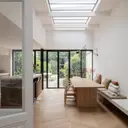
Buy with us
Engel & Völkers Shops
Your contact for this region

Open
Closes at 5 pm
Monday
8 am - 5 pm
Tuesday
8 am - 5 pm
Wednesday
8 am - 5 pm
Thursday
8 am - 5 pm
Friday
8 am - 5 pm
Saturday
Closed
Sunday
Closed

Buy with us

Sell with us
Shops nearby

Open
Closes at 5 pm
Monday
9 am - 5 pm
Tuesday
9 am - 5 pm
Wednesday
9 am - 5 pm
Thursday
9 am - 5 pm
Friday
9 am - 5 pm
Saturday
Closed
Sunday
Closed

Open
Closes at 12:30 pm
Monday
9 am - 12:30 pm, 1:15 pm - 5:30 pm
Tuesday
9 am - 12:30 pm, 1:15 pm - 5:30 pm
Wednesday
9 am - 12:30 pm, 1:15 pm - 5:30 pm
Thursday
9 am - 12:30 pm, 1:15 pm - 5:30 pm
Friday
9 am - 12:30 pm, 1:15 pm - 5:30 pm
Saturday
Closed
Sunday
Closed

Open
Closes at 5:30 pm
Monday
9 am - 5:30 pm
Tuesday
9 am - 5:30 pm
Wednesday
9 am - 5:30 pm
Thursday
9 am - 5:30 pm
Friday
9 am - 5:30 pm
Saturday
9:30 am - 12:30 pm
Sunday
Closed
WHAT WE OFFER
The process of purchasing or selling real estate is not an easy process, and effective real estate sales requires in-depth specialised and market knowledge. We are here to provide our experience and expertise to you.
FIND THE BEST PROPERTIES
The above search results are displayed by Engel & Völkers GmbH, as the sole technical operator of the real estate platform integrated into this website, in accordance with your search criteria. The respective providers are solely responsible for the content of the individual offers, whose provider information can be found in the advertisements.
Our Service in Comparison
Market-oriented selling price
Often sold under value
Professional, high-quality, legally watertight
Often not professional with missing information
100% complete and checked in detail
Often incomplete, with errors and expensive to obtain
Successful concept, trialed and tested with marketing and networking effects
On the off-chance
Always and everywhere
Often insufficient as it is not the main focus
Ø only 4-8 weeks
6 - 12 months
Steadfast during sales price negotiations due to years of experience
Inexperience can result in a low sales price
Credit check and financial confirmation
Often skipped
Security due to trialed processes and experience
Possible problems with comprehension and inexperience regarding the content
FREQUENTLY ASKED QUESTIONS
LOCATIONS
Tyrol (25)
Carinthia (1)
Upper Austria (1)
Burgenland (3)
Salzburg (12)
Lower Austria (27)
Vienna (1)
Contact


Engel & Völkers Austria
Headquarter - Vancouverstraße 2a
20457 Hamburg, Germany
Tel: +43 196 150 0050